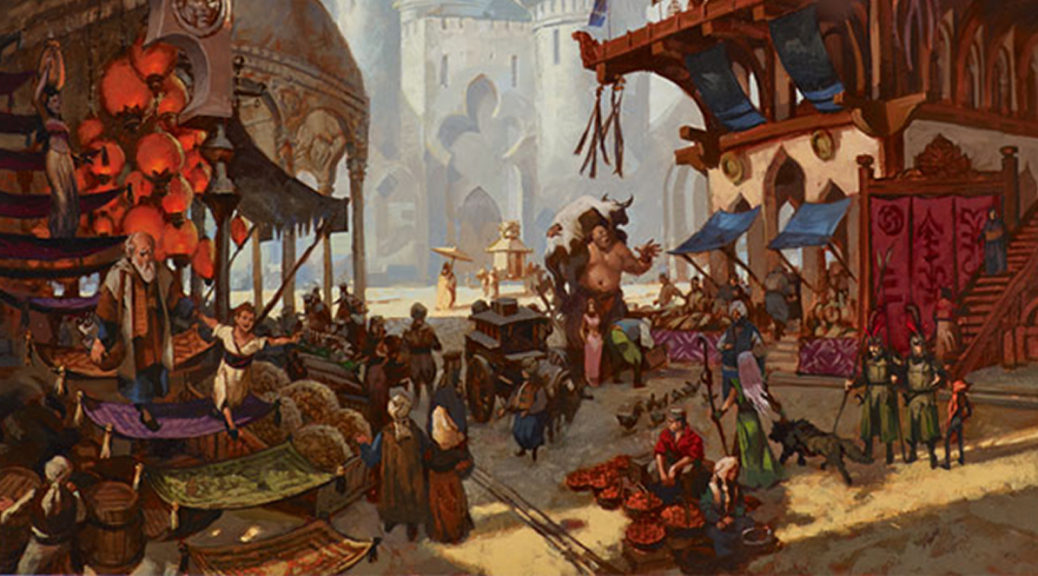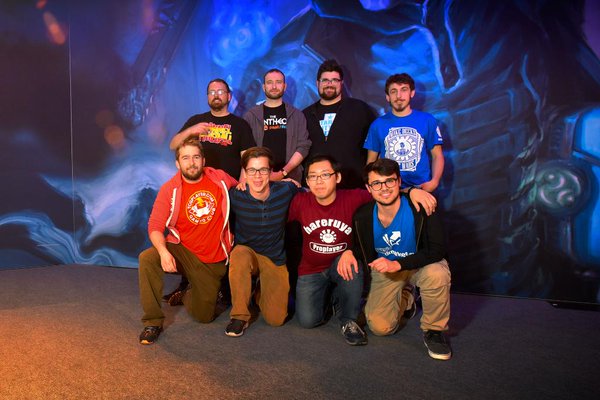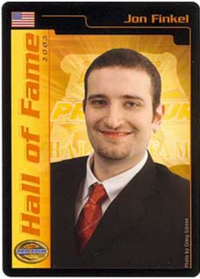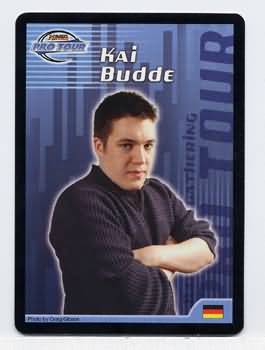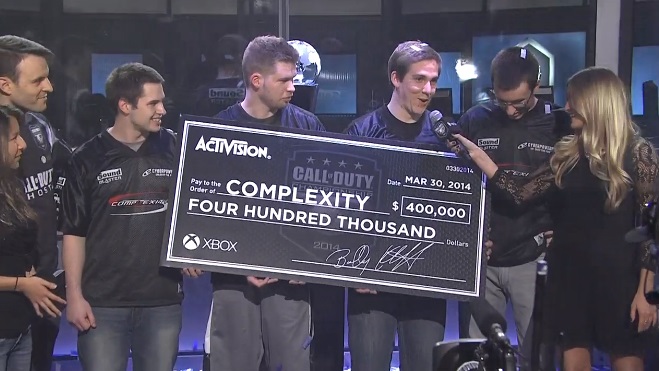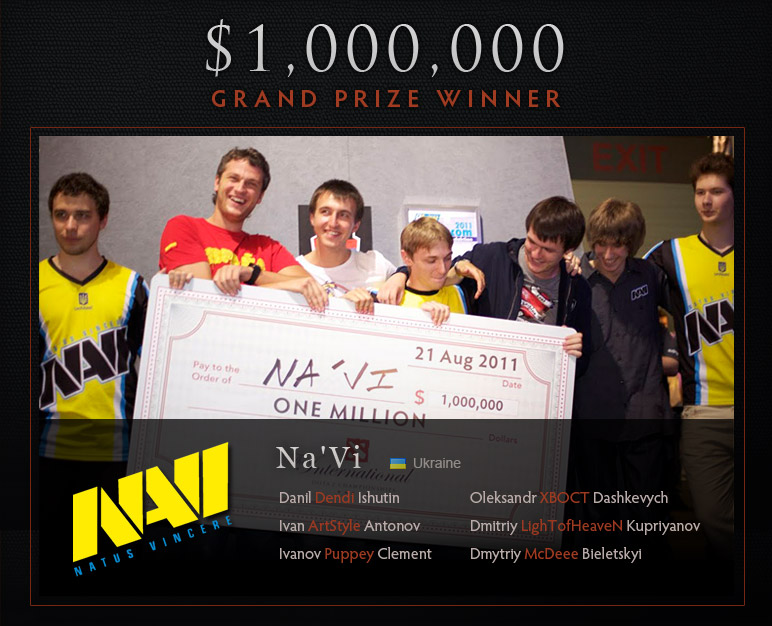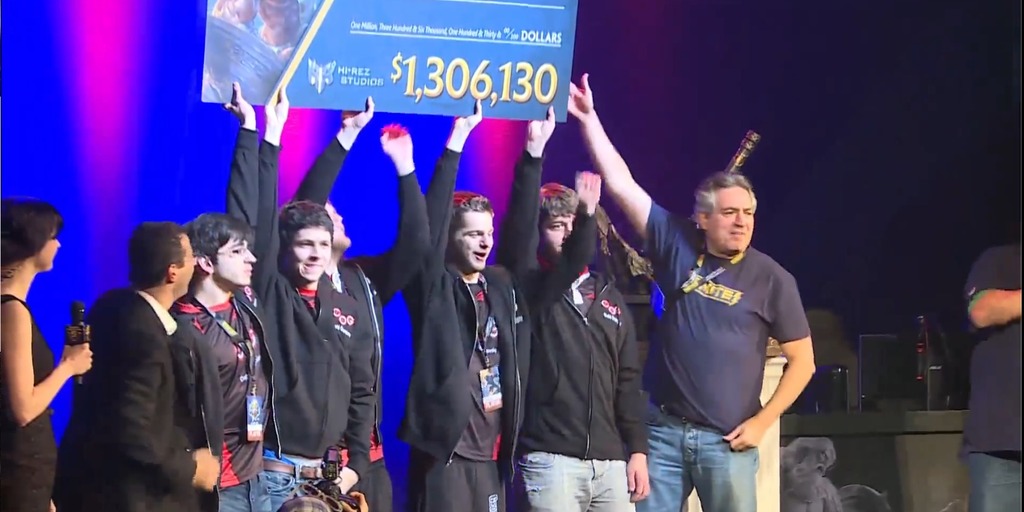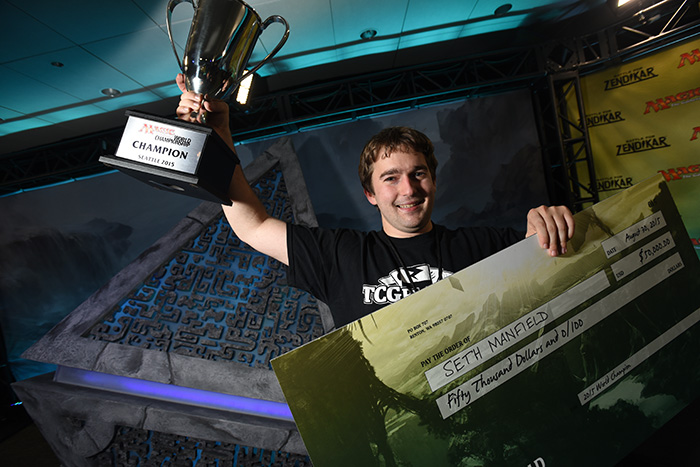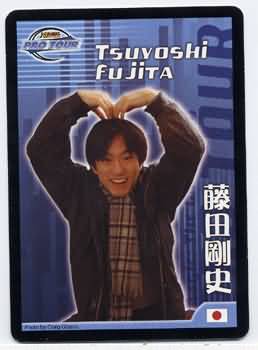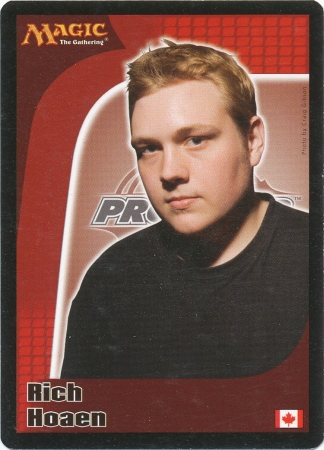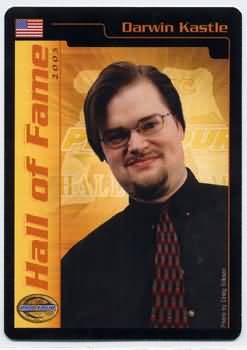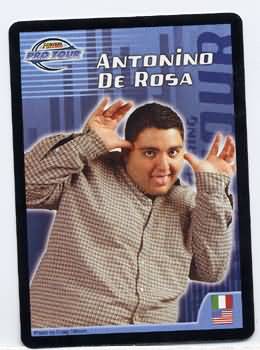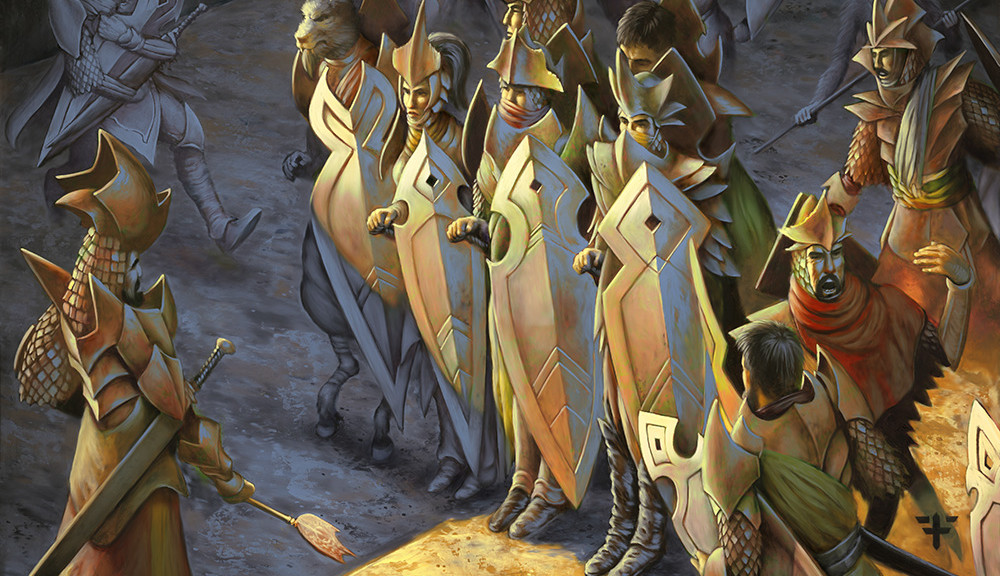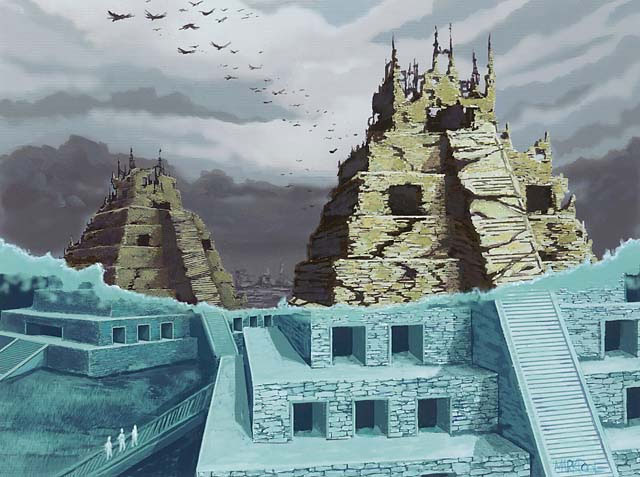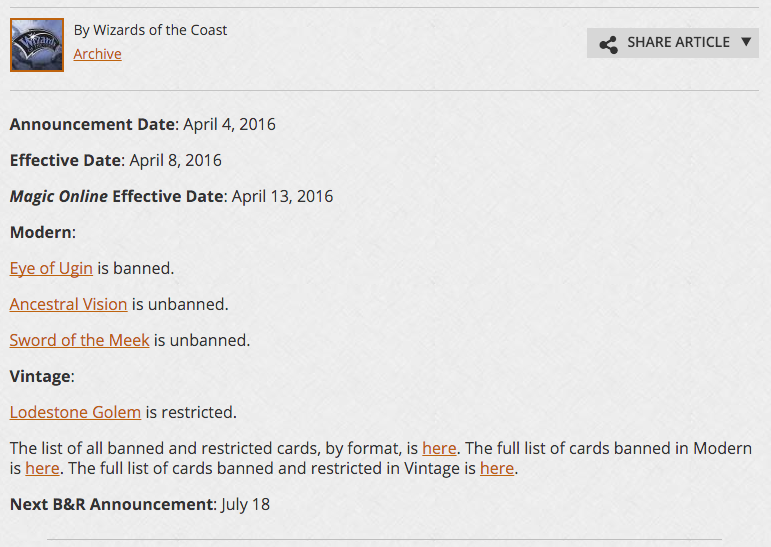On the one hand, Craig Berry is a normal Magic player. He enjoys casual games with friends. He has a family he works every day to support. He works hard to be good at the game and his crowning career achievement is qualifying for the Pro Tour. Magic has weaved in and out of his life and relationships for years, and he’s thankful for what it’s given him.
On the other hand, Craig Berry is the man behind the buyouts. He’s the man who spent thousands to pull all the Moats off the Internet, doubling the price overnight and pushing it up hundreds of dollars. He then did the same with Lion’s Eye Diamond, another key card for players trying to break into Legacy. He is the man who made a video announcing his intentions and spreading to the world how he was going to manipulate the current price of cards by buying all the available copies.
For better or worse, it’s been the talk of the community over the past week, and I wanted to see what leads someone to such brazen action. I spent an hour talking to Craig and I’ve transcribed the most interesting parts of that conversation to give the community some idea what’s going through the mind of the man who has been dubbed “Magic’s Shkreli,” after the infamous executive who raised the price of life-saving drugs by more than 5,000 percent.

Q: How did you become involved in Magic and later speculating?
A: I’m 24 years old now, and I started in the wild west days of 2006-07 when Umezawa’s Jitte was around $25. I was 14 years old and wanted to make a buck, so I figured out I could trade bulk rares for Jittes, and then take the Jittes to dealers — which not everyone had access to back then — to double my money. I started out as a “scummy” trader, but that’s not who I am anymore. I don’t want to “get” people.
My first spec was Bitterblossom when it was spoiled. I went to Star City, borrowed my grandpa’s credit card and specced on 60-70 copies at $4-6 each. I ended up selling them for $20-25. I paid him back with interest and that reinforced my opinion that there was money to be made in Magic.
Q: So the big question is, why are you doing this?
A: I’d be lying if I said my motivation wasn’t money; it’s most people’s motivation in life. But also it’s just a broken system.
I bought 41 copies of English moats at $375 each. It went up because I bought it out, but it would have gone up eventually because they aren’t printing any more and it’s really good with Eldrazi getting popular in Legacy. I also fully believe that if I hadn’t, then either someone else would have or it would have gotten there in a year anyway. All I did was accelerate the process. And this is something that has been going on for a long time by big stores, it’s just not been done so publicly.
Q: So why are you doing it publicly with the videos?
A: I’m friends with a lot of the grinders and mid-level pros, and some of them look to me for advice. I call up three or four of my close friends before I do a buyout, but then I also make a video because I want to let my friends know what I’m going to do and there’s too many to contact individually.
What’s interesting is that they just caught on. I’ve been making them for a year or so but none of them caught on until Lion’s Eye Diamond, which has something like 9,000 views compared to 300 or 400 for another one of my videos.
Lots of people think I’m doing a pump and dump [hyping a card only to sell personal copies into the hype] but that’s not it. I’m still sitting at 36 of the copies of Moat I bought. I can’t see a reason to sell them now because the price went up but there’s no reason for it to come back down either.
Now that so many people are following the videos I’ll probably stop doing them, because it isn’t very helpful to my friends at that point.
Q: So tell me about the Moat buyout.
A: Moat before was $375, and now it’s about $600. If you were playing Miracles in Legacy you should have had it for forever. And if you didn’t have it could have gotten it before; all I did was expedite the process.
And it raised the total cost of the deck by a few hundred dollars. So if you were going to pay $2,500 for the deck before, you’re going to pay $2,800 for it now. People are complaining, but they’re still going to buy them. It’s like taxing sugary drinks — people will complain but they’ll buy them anyway. It’s the same with Magic.
Q: For Moat, that makes sense. What about Lion’s Eye Diamond, a buyout that has priced some people out of playing Legacy?
A: I don’t look at Magic as a game, I look at it as a business, and it’s kind of like day trading. I feel bad for anyone priced out personally, but it’s not going to change what the business is. It’s just how the world works.
Magic isn’t really a hobby anymore; there’s so just so much money involved. You walk into Grand Prix Vegas last year, and there’s 46 dealers each spending on average $100,000 to $150,000 with some of the bigger dealers spending up to $400,000. That’s $7 million dollars spent — that’s how big of a business this is.
The people who complain about prices don’t affect the market. They weren’t the ones who were going to spend money from the beginning. With Moat, I’ve never seen so many people complain about a card they were never going to buy. It’s really easy to have trigger fingers and complain about something, but it doesn’t affect the market.
But I do feel for them personally. A friend commented that a kid at his store couldn’t finish his Legacy deck because all he needed were Lion’s Eye Diamonds and now he was priced out of them. That’s one of the genuine cases and I gave him LED’s at pre-spike prices.
Q: But what if there’s more people like that than you can know about?
A: It’s hard to differentiate the genuine cases from the ones for people just looking for stuff. I don’t think that’s the majority; I think the spikes affect very few people and mostly people just like to complain.
Q: So where do your funds come from to do all these buyouts, especially if you aren’t selling right after the spike?
A: I’ve worked hard for my money. I’m full-time in MTG, and I don’t own a store or an online storefront — I feel like I make more money selling to dealers. I make money through buyouts and speculating. I had a daughter in 2014, and I’m working to support my family.
I really got going in 2014 when I was presented with a collection to buy for $5,000 that I knew I could make money on. I didn’t have the money, but I knew it was worth it so I received a loan that I paid back with interest and since then I’ve turned that into everything I have. I’ve grinded really hard, working 14-15 hours a day.
When I buy cards, I don’t buy just a few of them. For instance, I bought 1,000 Rest in Peace at 70 cents apiece, and while a lot of people thought it would be a long grind just to make $2, that card is now way higher and I believe it will be $10. It’s the best at what it does and even non-dedicated graveyard decks like Jund have a hard time with it.
Q: Why Magic? Why not trade something like actual stocks?
A: I guess my end goal is to get into day trading with the stock market, but I don’t know enough about it. I have a couple of friends who do it who I’ve been talking to, but it’s just a completely different world. I understand the Magic market more than the stock market, and to be honest I think the return on Magic cards is way higher than CDs or mutual funds or any of that.
It helps that I know what to keep an eye on. When there’s a Pro Tour I’m looking at the Constructed decks that went 8-2 or better and spending money based on that — I went deep on Archangel of Thune after the last Pro Tour and then it later spiked. I also watch the market in other countries; Voice of Resurgence for a long time was $35 in Japan and $30 in Italy but only $17 here, so I bought a bunch of them because of that, and then later it went up as I expected.
Magic cards are safer than traditional investments. Look at something like Brexit. It made the stock market plummet, but it didn’t affect Magic at all. If I buy a house I can’t make money off of that money. I think Magic is the best place to put that money to work.
Q: How do you respond to people who call you the ‘Martin Shkreli’ of Magic and say that you are hurting the game?
A: A lot of people think I do it maliciously, but I’m just running a business and the videos are really just to help my friends. I sold a friend a NM Moat for $300 because I want to help out my friends, not just make money from this.
If it wasn’t me doing this it would be someone else. I hate sitting back and thinking to myself I could have make $15,000 in two weeks doing this, but instead I sat back and someone else did it. I used to be very afraid to spend money, and I would tell my friends what to buy and then I wouldn’t buy it and I would watch other people make money on it.
I think that’s just the way this business works. I’m friends with a lot of people in the community, and I don’t think they would consider me a friend if I was out just to hurt the game.
Q: So what’s next for you?
A: I don’t think I’ll be making the videos anymore. I think a lot of the best targets have been bought out. Moat was an easy one not only because of the Reserved List but because of Eldrazi in Legacy and how hard it is for them to beat.
I don’t just buy cards because they’re on the Reserved List — I think that’s a bad plan. Look at something like Thought Lash. It was bought out and the price spiked but what’s the plan now? A card like Moat I can sell over time, but there is no demand for Thought Lash so where are you going to sell them? I only target cards that are going to continue to see play.
There’s a few things that I have my eye on; City of Traitors is one of those. Gaea’s Cradle also should be way more expensive than it is. If Jace, Vryn’s Prodigy ever goes below $26 Mid I’m happy to drop $5,000 on it because that card is insane and people don’t realize just how few there are and how hard it is to reprint, being a double-faced card.
I think the best investment for many people right now is Sliver Hivelord; that card is so underpriced. It’s a 4-5 year plan but if people want to make money they should put it there because it will have a much higher return than any stock you can think of.
Q: Is there anything you want to add?
A: One final thing. I think it’s really easy to hate someone when you only know one thing about them and it may not be socially accepted. You only ever hear about the bad and never the good, andI don’t think people realize how much I’ve done to help people in this game as well.
I’m just like anyone else and I want what everyone else wants. I’ve gone through a lot personally recently —my mom committed suicide last year and I’ve had some other personal things happen to me that have been really rough — so to that there have been some terrible things said about me is hard. When you asked on Twitter what people would ask me if they could, one person wanted to know if I wanted a bullet in the head or the heart. That’s just crazy. I see people making videos condemning me, and if they don’t have something better to do with their time, I moreso feel sorry for them that they have to attack someone than anything else.
In the end, I’m not doing these buyouts to be malicious. All I really want from Magic is to make a good living for myself, have fun with what I do and make great friends. There’s so many people on the Internet making up rumors about me, but I’m not a bad person, I’m a nice guy running a business.
…
My take
This was one of the more fascinating interviews I’ve conducted, and I want to add a few thoughts on the subject, which I promise to keep brief.
Before I go further, I want to say that I understand the concerns about “giving him a platform.” But the truth is the buyouts are going to happen whether we ignore them or not, and they aren’t limited to one guy. We can learn much more from engaging in serious discussion on this topic than we can by trying to pretend it doesn’t exist.
I believe Craig when he says he doesn’t see himself as the bad guy, and I certainly don’t condone some of the vitriol the Internet has spewed at him. I also think he’s dead-on when he says these things have been going on for a long time by many parties — many of them large stores the community interacts with regularly — but are only now coming to the forefront because of his videos. In the end, Magic is many things but it is first and foremost a business, from Hasbro to Wizards of the Coast to the largest online store to the smallest LGS in your hometown. The line about GP Vegas really stuck out to me — just think about how much money is in that room — and it really drives home the point that Magic, for all its great traits and community inclusiveness (we really do have the best community), is Big Money.
And where there’s Big Money you will have people working to take their share of that money. Craig Berry himself is not the problem — he’s simply become the face of the underpinnings that move the Magic market. So long as Magic continues to be Big Money capitalism dictates that there will be a Craig Berry in the market. Not only is this inevitable, it’s also the business model Magic was founded on 25 years ago. That model hasn’t changed in nearly three decades, it hasn’t changed since you started playing and it’s not changing any time soon. And, from a business perspective, there’s no reason it should. Magic is doing better than ever and we have all benefitted from that success, whether it’s in watching videos on your favorite website, tuning into the Pro Tour on Twitch or competing in a regional 5k in your area.
But capitalism and community make for strange bedfellows, and no matter how Craig or his peers see the game Magic is more than just a money-making vehicle. It’s a community that does incredible things for people every day of every week of every year for the past two and a half decades, and it does things — real, tangible things — for people that even the most aggressive mutual fund never could.
That’s why the game is the success it is, and the reason people like Craig are able to make a living off from it. In the end, the question isn’t about whether someone can pull the trigger on a buyout or price spike, it’s about whether you can.
Because there are real consequences to these actions that make perfect sense in an academic world but have real impacts on the average player in the real world. I run a singles store out of a LGS myself, and I have people come to me every week trying their best to make their money stretch as far as possible so they can try to afford that last Tarmogoyf or set of fetch lands and finally play on Modern Night. I see kids give up on even getting into the game because they know they’ll never be able to afford the cards.
That’s why I do what I do in creating weekly Magic content, from Twitter to Brainstorm Brewery and editing this site. People hate the term “MTGFinance” and I understand why — buyouts like this certainly make it look bad. But Magic finance is many things to many people, and to me it’s a way to help more people afford to play this game that I’ve seen do unbelievable things for families. I’m not writing or casting to tell the next wannabe Craig Berry which cards to buy, I’m doing it to help that 16-year-old have just a little better shot at accomplishing what they want to in Magic.
Because, to me, it’s never been about the Magic — it’s about the gathering. I can never stop people from buying out cards to make money and it’s hard to blame them for running their business the way society dictates success, but I can go to sleep at night knowing I wasn’t the reason somebody somewhere isn’t suddenly four Lion’s Eye Diamonds short of finally finishing that Legacy deck they’ve been saving up for months to buy.
I choose community over capitalism. What about you?
